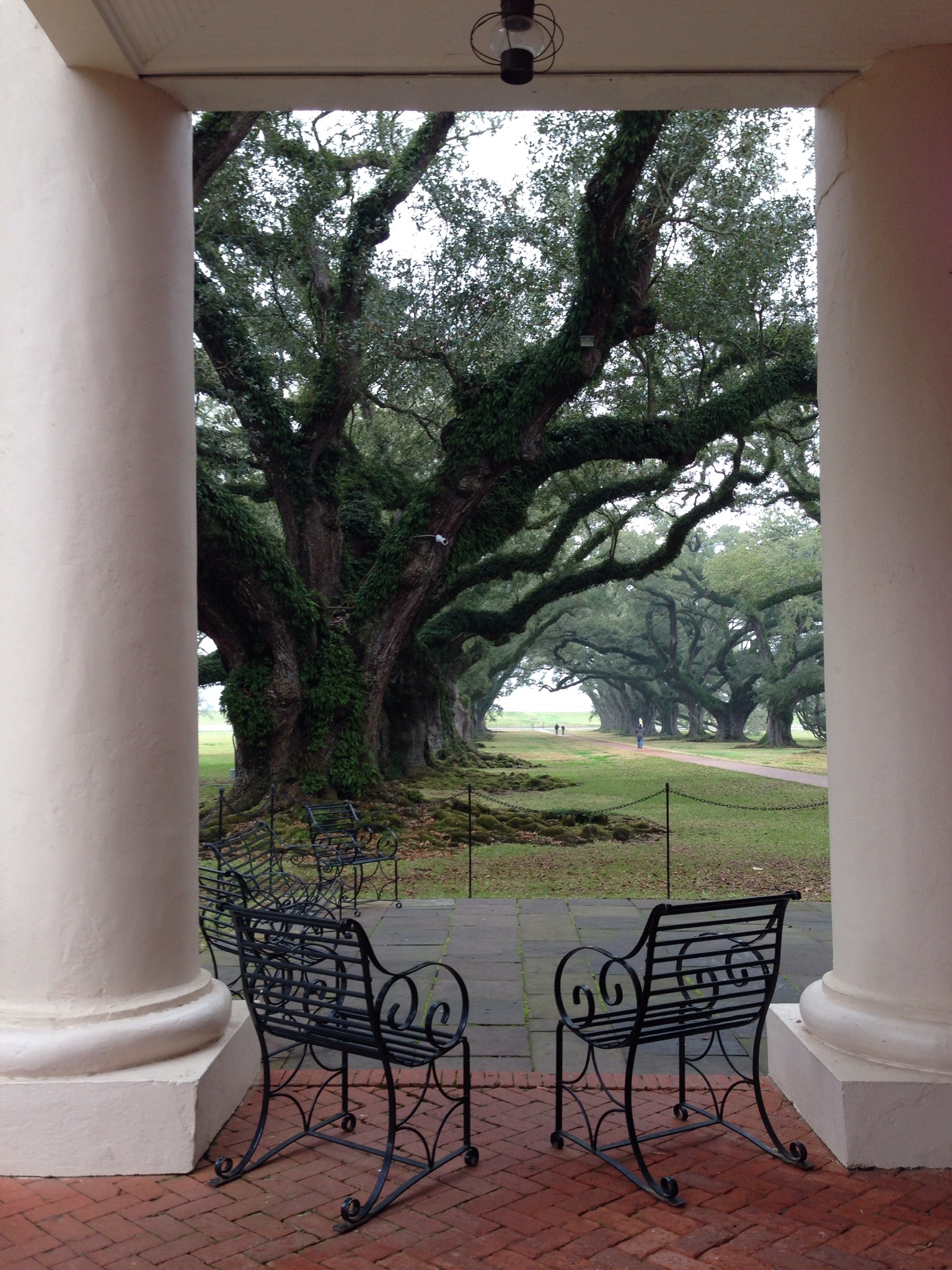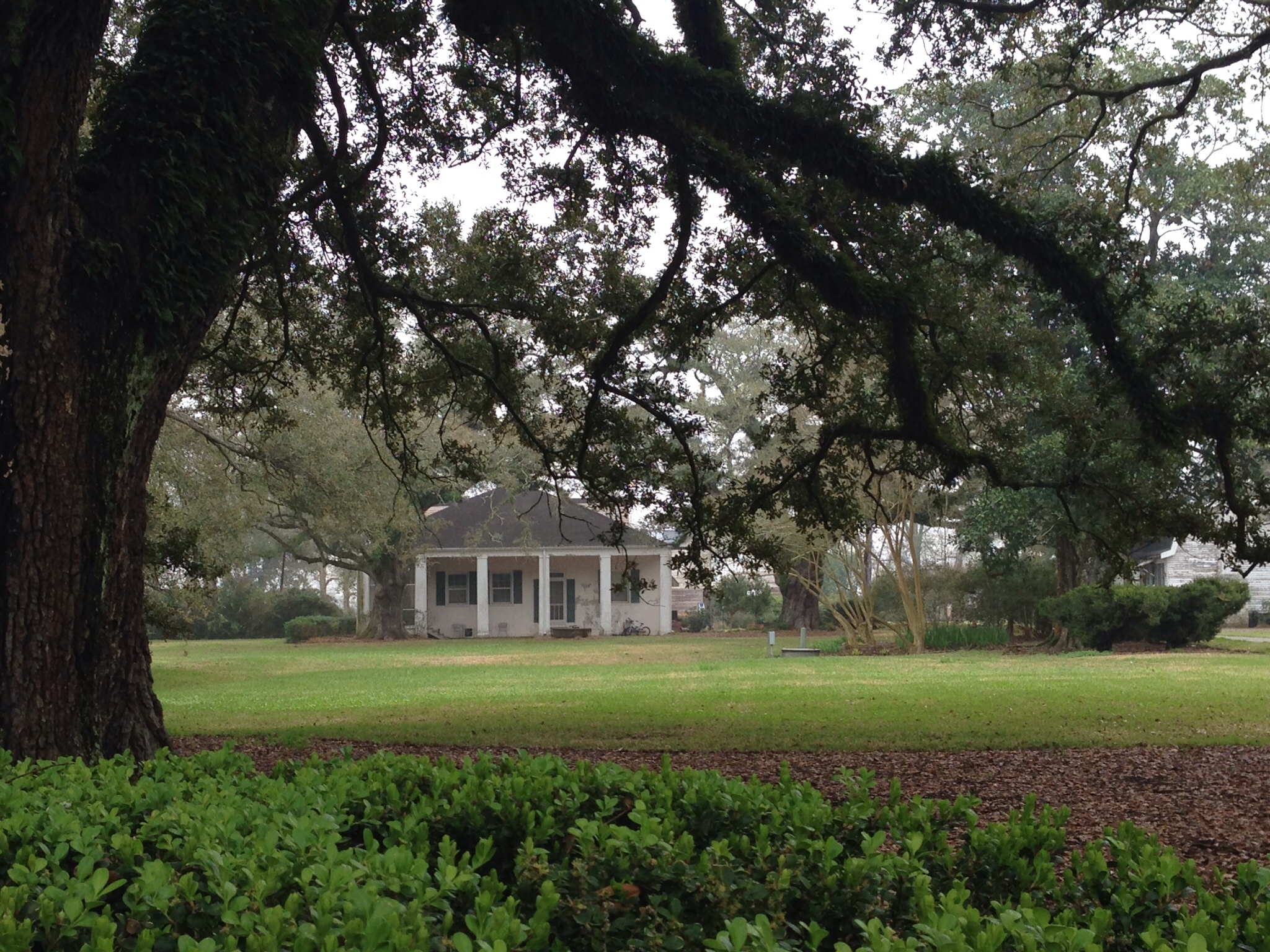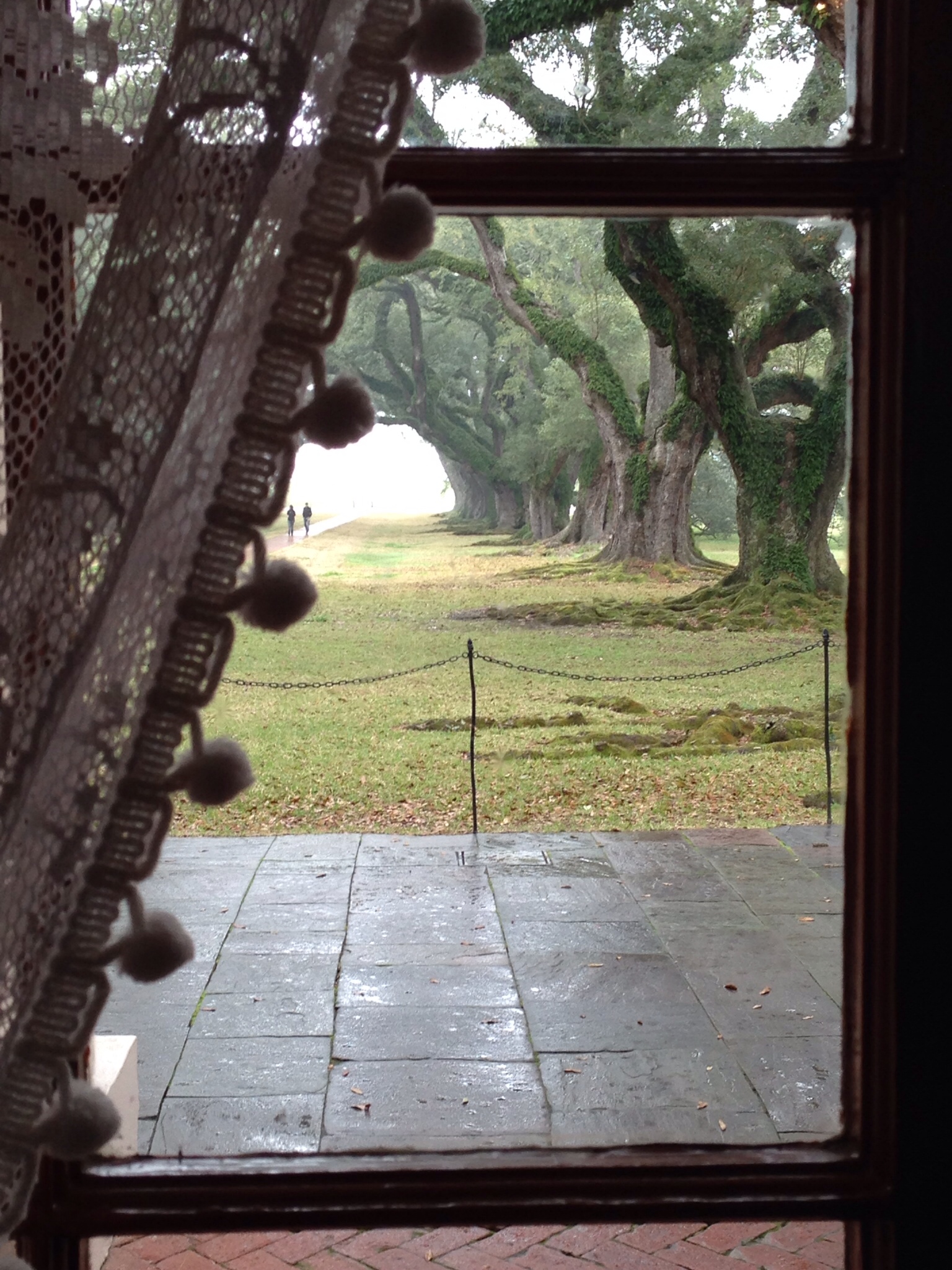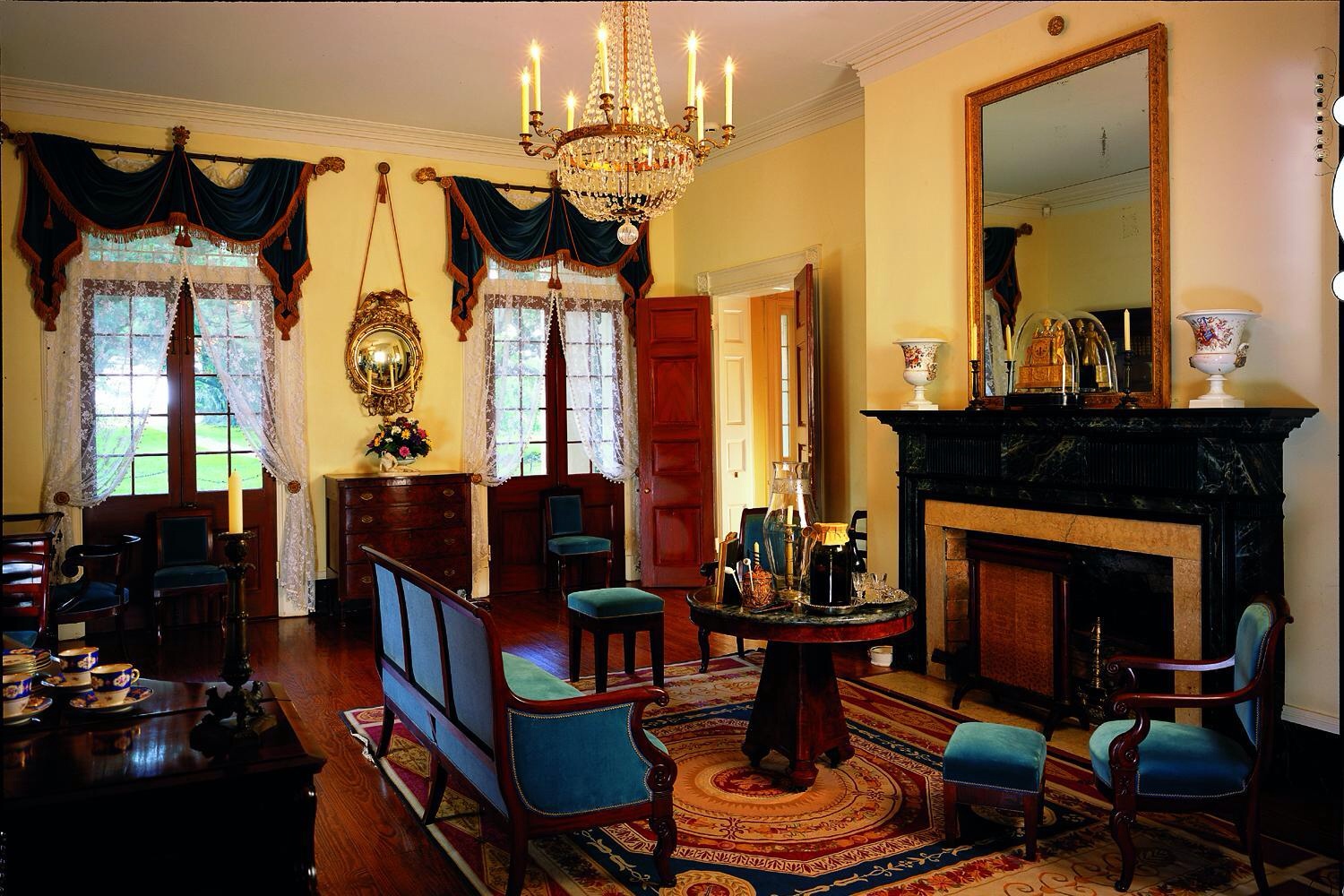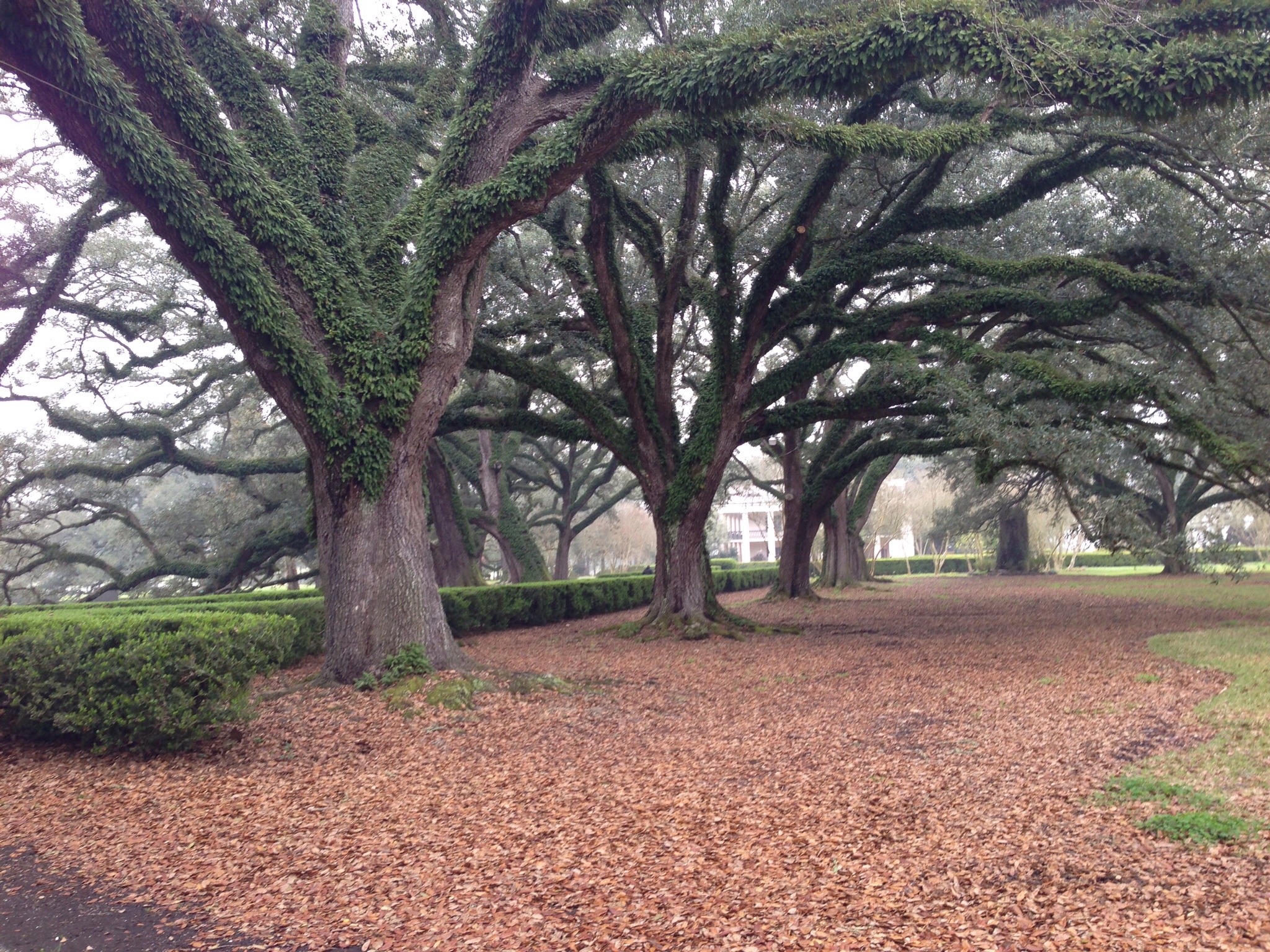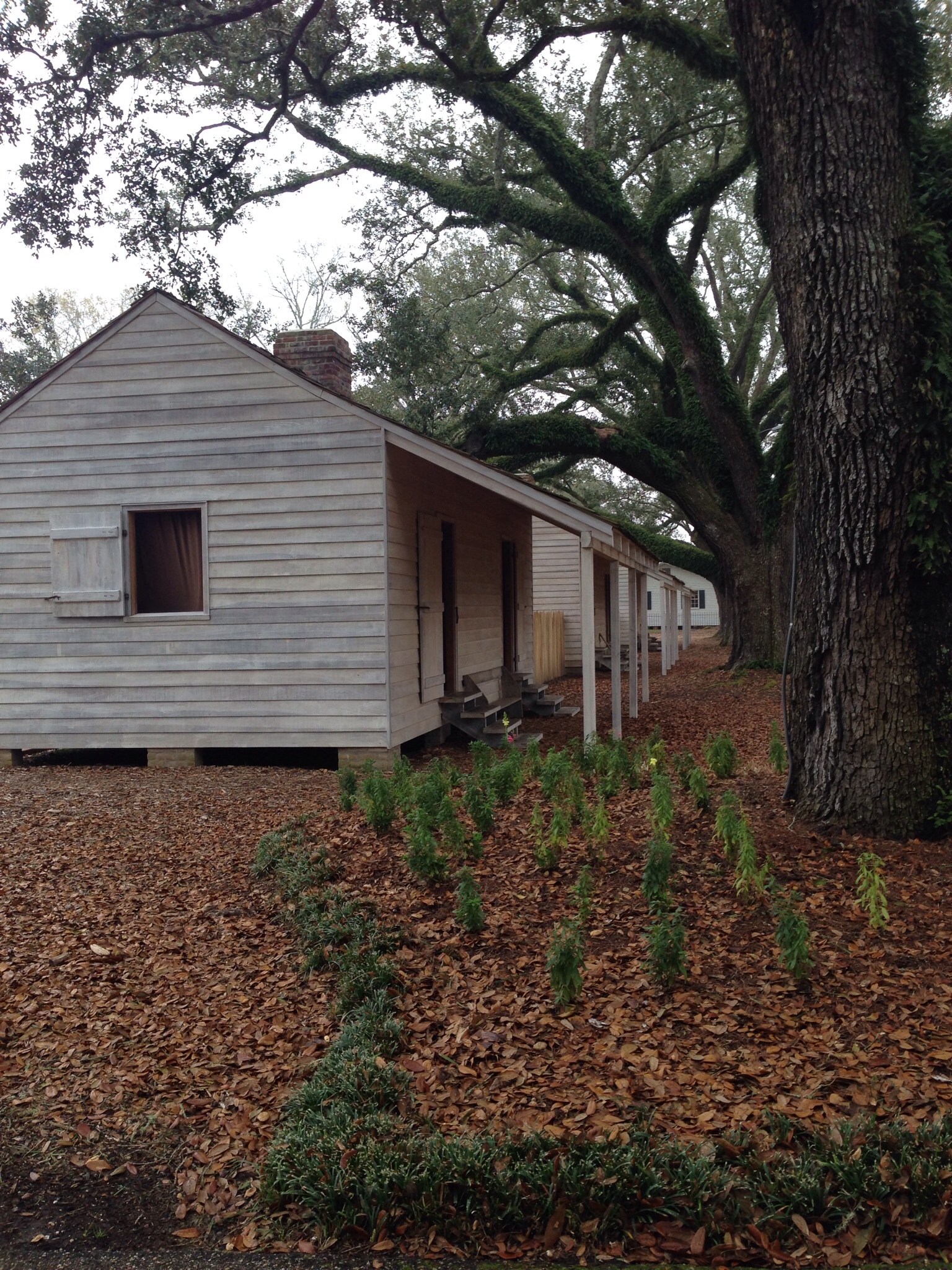We had two things on our 'must see' list while we were in Louisiana, other than Mardi Gras of course, and that was to visit a southern plantation and go check out some gator/swamp territory. So today it was off to a stately plantation home and we'll check the swamps tomorrow.
We decided to go to Oak Valley Plantation at Vacherie, which is about 45mins from New Orleans as they have regular tours, a very well preserved manor home and it was on the way to Baton Rouge.
Today was rather dreary, weather wise, felt like it was going to rain all day, but kept changing its mind. But the overcast slight drizzle seemed to suit the mood of the plantation with it's restoration fern covered oak trees, the house's 28 stately Greek Revival columns, and of course the solemnity of the reconstructed slave quarters.
Oak Alley was, and remains, a going sugar plantation. Built by slaves, the house is three stories high with massive verandahs around all floors, and insulating 16″ thick brick walls for both interior and exterior walls. It has been designed with windows and door directly opposite on each side of the house so as to maximise the cross ventilation – many of these heat management design elements remind me very much of the famous Old Queenslander style houses back home. Interestingly, Oak Alley consists of very few rooms, one sitting room or parlour, a lavish dining room, and plantation management office downstairs; a master bedroom, nursery, children's bedroom and a sitting room/viewing room (for use when someone had passed away as there are no funeral homes anywhere) upstairs and a large internal stairwell in the centre of the house. I wasn't aware that many of these old homes had a kitchen in an entirely separate building, and slaves would prepare food elsewhere and bring it to the big house at meal times,Oak Alley derives its name from the 28, three hundred year old, Virginia Oaks that line the path leading up to the front of the home. Oddly enough, the house is about two hundred years old and no one can document or could recall who planted these oaks. Out the back of the home, is another 28 Virginia Oaks in a path leading away from the house towards the slave quarters, though these gorgeous trees are a young one hundred and fifty years old and were planed by Jacque Roman, the owner of the plantation during the slaving era and the builder of the home.
Through years of studying history, we learn so many things about the American civil war, slavery and emancipation histories, but it's the little details that you learn from visiting a place like this that stay with you…
– The slaves would supplement their rations by growing their own vegetables and raising their own chickens, we thought it quite odd that the plantation owners would buy any excess corn off the slaves (that they OWNED) to feed to their horses and other stock animals.
– Miss Celine (Jacque Roman's wife) would give her houseguests a pineapple upon their arrival, and each morning the guest got up and their pineapple was intact, they were fine. But if one morning a guest got up and found their pineapple served up for breakfast, they had outstayed their welcome.
– Many slaves died from very preventable conditions, a very obvious one being from parasite picked up while working the fields without shoes one – worms and the like. It defies logic why you would let your $300-$1200 slave die for want of a cheap of pair of shoes? Surely shoes would be a good investment in protecting your property and ensuring many years of work to come? Bad management.
– Many southerners were very superstitious, and I never knew this, but when a person died, and the mirrors were covered in black cloth the theory behind this was to stop the person's spirit from crossing into, and being trapped in, the mirror.
– When the boy of the house reach fifteen years of age, he was considered a man and it was no longer appropriate for them to live and sleep in the big house. They would move into a nearby house called the Garconiere but still take their meals etc in the house with the family.
– It seemed quite a standard practice for well to do socialite wives to take the children to live in New Orleans (a day away by steam boat and two or three days by horse) and leave their husband/Master to oversea the plantation.
– The mattresses on the beds in the house were made of horsehair, duck feathers and Spanish moss, which would flatten down and get lumpy overnight. Every morning the house slaves would spend up to an hour a mattress taking the bed head off the bed (which resembles a rolling pin) and beat and roll the mattress until it was soft and flat again… apparently it was quite a skill and had to be done every morning.
There were many other things too, but these were the little oddities that stuck in my head for now. I wish we had more time to check out more of the plantations in the area. Some are well looked after like this one which has been in a special trust for the last forty years or so, and others… not so much. It is a sad chapter of America's history, but a chapter that can not, and should not, be denied or neglected.


